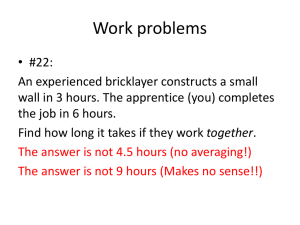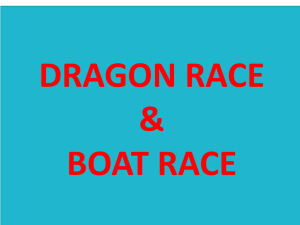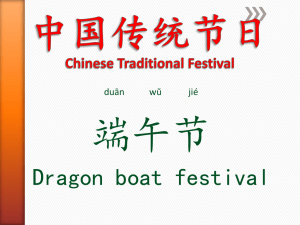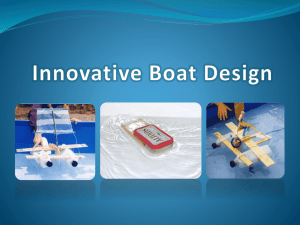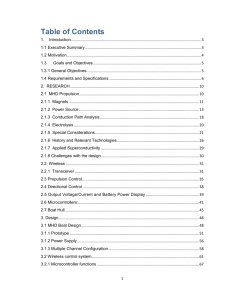Risk Register and Risk Treatment Register
advertisement
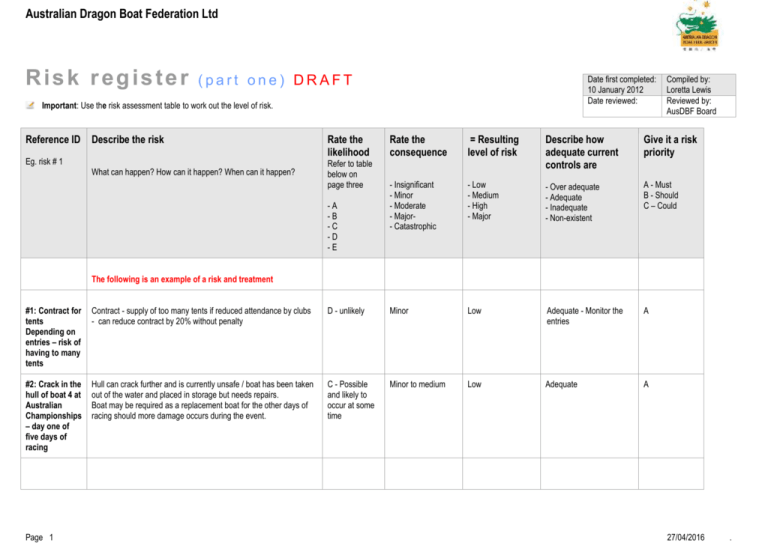
Australian Dragon Boat Federation Ltd Risk register Date first completed: 10 January 2012 Date reviewed: (part one) DRAFT Important: Use the risk assessment table to work out the level of risk. Reference ID Describe the risk Eg. risk # 1 What can happen? How can it happen? When can it happen? Rate the likelihood Refer to table below on page three -A -B -C -D -E Compiled by: Loretta Lewis Reviewed by: AusDBF Board Rate the consequence = Resulting level of risk Describe how adequate current controls are Give it a risk priority - Insignificant - Minor - Moderate - Major- Catastrophic - Low - Medium - High - Major - Over adequate - Adequate - Inadequate - Non-existent A - Must B - Should C – Could The following is an example of a risk and treatment #1: Contract for tents Depending on entries – risk of having to many tents Contract - supply of too many tents if reduced attendance by clubs - can reduce contract by 20% without penalty D - unlikely Minor Low Adequate - Monitor the entries A #2: Crack in the hull of boat 4 at Australian Championships – day one of five days of racing Hull can crack further and is currently unsafe / boat has been taken out of the water and placed in storage but needs repairs. Boat may be required as a replacement boat for the other days of racing should more damage occurs during the event. C - Possible and likely to occur at some time Minor to medium Low Adequate A Page 1 27/04/2016 . Australian Dragon Boat Federation Ltd Risk treatment register Date first completed: 10/01/2012 Date reviewed: (part two) This summary is based on your analysis of each risk in the Risk Register (stage one). Risk in priority order from the risk register #1: Contract – tents Depending on entries – risk of having too many tents #2: Crack in the hull of boat 4 at Australian Championships Page 2 Possible treatment options - Available options - More research needed to create new options? Contract – can reduce contract by 10% without penalty Any additional reduction – pay 50% 1. Monitor team levels / attendance days 2. Potential to reduce by 10% without penalty 3. Reduce further and pay 50% 1. 2. 3. 4. Organise for boat repair immediately so boat can be used again for the competition Use the backup spare boat as part of the contingency plan Inform club to get the boat fixed Place signage on the boat – DO NOT USE Preferred Choose what to do: options A = accept option/s R = reject option/s Who will implement option/s By when? Who will monitor this risk and its treatment? 1 2 1 =A 2 =A 3=R AusDBF Board 01/03/2012 Finance Director and Chair of Organising Committee 1 2 4 1=A 2 =A 3=R 4=A Chief Official, AusDBF Board and Organising Committee 2/4/2012 AusDBF Board AusDBF Board Reviewed by: Further action Monitor team entries and numbers of teams per day Monitor the progress of the repairs 27/04/2016 . Australian Dragon Boat Federation Ltd Consider the consequences and likelihood for each of the identified hazards / risk and use the table to obtain the risk level. The following table can be used to identify the level of risk and help to prioritise any control measures. This may be used for determining all levels of risk and not OH&S type risks only. Define the risk – define the likelihood and potential consequence then apply the controls and continue to monitor the risk. Likelihood Consequences 1 – Insignificant 2 – Minor 3 – Moderate 4 – Major 5 – Catastrophic Dealt with by in-house first aid etc Medical help needed. Treatment by medical professional/hospital outpatient, etc Significant nonpermanent injury. Overnight hospitalisation (inpatient) Extensive permanent injury (eg loss of finger/s) Extended hospitalisation Death. Permanent disabling injury (eg blindness, loss of hand/s, - quadriplegia) High (H) High(H) Extreme (X) Extreme (X) Extreme (X) Medium (M) High(H) High(H) Extreme (X) Extreme (X) Possible and likely to occur at some time Low (L) Medium (M) High(H) Extreme (X) Extreme (X) Unlikely to occur but could happen Low (L) Low (L) Medium (M) High(H) Extreme (X) May occur but only in rare and exceptional circumstances Low (L) Low (L) Medium (M) High(H) High(H) A- Almost certain to occur in most circumstances B- Likely to occur frequently CDE- How to Prioritise the Risk Rating - Once the level of risk has been determined the following table may be of use in determining when to act to institute the control measures. Extreme (X) High (H) Medium (M) Low (L) Act immediately to mitigate the risk. Either eliminate, substitute or implement engineering control measures. Remove the hazard at the source. An identified extreme risk does not allow scope for the use of administrative controls or PPE, even in the short term. Act immediately to mitigate the risk. Eliminate, substitute or implement engineering control measures. If these controls are not immediately accessible, set a timeframe for their implementation and establish interim risk reduction strategies for the period of the set timeframe. Take reasonable steps to mitigate the risk. Until elimination, substitution or engineering controls can be implemented, institute administrative or personal protective equipment controls. These “lower level” controls must not be considered permanent solutions. The time for which they are established must be based on risk. At the end of the time, if the risk has not been addressed by elimination, substitution or engineering controls a further risk assessment can be undertaken. Take reasonable steps to mitigate and monitor the risk. Institute permanent controls in the long term. Permanent controls may be administrative in nature if the hazard has low frequency, rare likelihood and insignificant consequence. An achievable timeframe must be established to ensure that elimination, substitution or engineering controls are implemented. NOTE: Risk (and not cost) must be the primary consideration in determining the timeframe. A timeframe of greater than 6 months would generally not be acceptable for any hazard identified as high risk. Interim measures until permanent solutions can be implemented: • Develop administrative controls to limit the use or access. • Provide supervision and specific training related to the issue of concern. (See Administrative Controls below) Hierarchy of Control Controls identified may be a mixture of the hierarchy in order to provide minimum operator exposure. Elimination Eliminate the hazard, threat or issue Substitution Provide an alternative that is capable of performing the same task and is safer / appropriate to use. Engineering Controls Provide or construct a physical barrier or guard or other controls. Administrative Controls Develop policies, procedures practices and guidelines, in consultation with QDBF, to mitigate the risk. Provide training, instruction and supervision about the hazard. Personal Protective Equipment Personal equipment designed to protect the individual from the hazard. Page 3 27/04/2016 .

